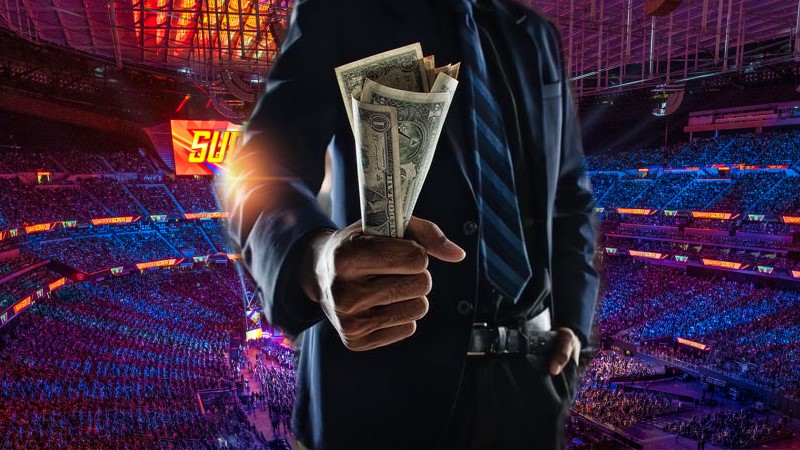
World tournaments, bright shows, and thousands of fans create a fake illusion of fame and a rich life. However, behind this shine, there is a side that many fans never see or even think about. It is a real world full of physical pain, emotional pressure, financial instability, and big sacrifices.
The Dark Side of Wrestling
Not everyone gets to the big stage, and the road to it is long and hard, so most wrestlers start on the indie scene. They work without official contracts and pay for travel, medical check-ups, training, living, and costumes with their own money. Every time they step into the ring, it is not only a way to earn money, but also a risk of injury that can stop their career for an unknown time.
Finding shows on their own, last-minute cancellations from promoters, and getting paid less than promised make their income unstable. Many wrestlers say that sometimes their expenses “eat up” everything they earn. This instability adds stress and emotional and financial pressure. Still, every wrestler who wants success must always stay strong, show charisma, and be ready for any conditions. An indie career is a hard test for both the body and the mind.
The indie scene lets beginners get experience, build their own character, and show themselves to scouts from big promotions. At local shows, a wrestler demonstrates technique, charisma, and the ability to work with the crowd. As a result, videos of their matches are used to get into WWE, AEW, and other companies.
To reach a professional level, athletes usually need to complete training programs (for example, the WWE Performance Centre), pass a casting, and sign a contract. Only then do they get a chance for regular performances, a global audience, and a stable income.
Earnings and Expenses in Wrestling
According to statistics, top stars like Roman Reigns or Brock Lesnar have contracts worth over $5-10 million. But they often lose a large part of their income because of high taxes (up to 37%) and paying for manager, training, or medical care on their own. For example, surgery after a knee injury can cost around $20,000, and insurance doesn’t always cover it, especially if the wrestler is independent.
According to Wrestlenomics, an independent wrestler earns around $50-150 per show. Even with such a small payment, indie wrestlers must pay for travel, housing, and costumes with their own money. Often, these expenses can be more than $400 a week. A tour with several shows during one week can cost a wrestler $400-500 only for travel, and the final profit after all expenses can be just $50-100. This instability and low income force wrestlers to look for other ways to earn money. This is why many wrestlers in the USA have extra jobs outside the ring to cover basic costs.
Dwayne “The Rock” Johnson said in an interview that before joining WWE, he worked in an independent boxing club and remembered his first payment. He earned $40. Because of this, he needed extra money, so during breaks he sold Polaroid photos for $5 and with an autograph for $10. On a good night, he could earn about $80.
Beginners who join the WWE Performance Centre usually get a base contract of $50,000-80,000 a year. At the same time, the indie scene can give wrestlers only a few thousand dollars per year, according to Sporting News. Young indie wrestlers earn $0-50 per match, so even with two shows a week, the early income is very small. More experienced indie wrestlers sell their own merch, so they can earn around $15,000 a year, if merch sells well and they have many shows.
Famous wrestler John Cena said in interviews that he had to live in his car near the gym and work several side jobs to stay financially alive. He started his wrestling career in small, independent promotions, including Ultimate Pro Wrestling in California. In 2000, he began working with WWE (back then, WWF), and his first contract was only $12,500 a year. At the same time, his rent was $1,200 a month ($14,400 a year), so the contract didn’t even cover housing.
Career Planning and Strategy
To stay competitive and keep growing in their careers, wrestlers invest not only money but also time. This means regular training, recovery after injuries, massages, physiotherapy, acrobatics, good nutrition, and mental preparation. Mental strength is very important too, because the constant pressure from fans, castings, and performing on stage creates stressful situations. The environment where a wrestler works also matters.
Communities and colleges help share experience, reduce travel costs, give psychological support, and offer advice about shows and contracts. Sometimes these connections decide how successful an athlete will be on the road to the indie scene and the big stage.
Many athletes plan their careers years ahead. They carefully choose which indie shows to work at, who to train with, what audience to build, and what merch to release. Even one successful performance at the local show can open the door to signing a first contract. This strategy helps reduce risks, build a strong reputation, and increase the chance of a stable income in the future.
Some top performers have lost large amounts of money because of unexpected expenses, unpaid bonuses, or bad investments. This is without counting sudden injuries or illnesses. Financial stability in wrestling is always fragile and needs constant planning, whether it is an indie wrestler at the start of the journey or a WWE star with millions of fans.
Life Between Matches
Because of the financial reality of an indie wrestler, athletes have to plan their budget carefully and constantly look for extra chances to perform, take more risks, and build their own “brand”.
After a show, there can be weeks without matches, and during this period, they must find other ways to earn money. Some give private training, organise seminars for beginners, take part in photoshoots, and sell their own merch. Others work in the media or at different sports events. They run social media, make videos for YouTube, all to grow their popularity. This part of the work also affects success and can help them get a contract in a big company and increase their income.
Even those who join top companies are not protected from financial problems. While WWE or AEW stars can earn from $1 to $10 million a year, these numbers rarely become pure profit. A big part goes to taxes, agent fees, travel, dear, and insurance. Also, an injury that takes a wrestler off the schedule can cost hundreds of thousands of dollars because of medical care and missing bonus payments for matches. During these hard periods between matches, with big expenses and no income, learning and flexible payment options for wrestlers can help them manage their basic costs and focus on their careers.
What Wrestlers Advise Beginners in this Field
A successful wrestling career needs a lot of effort, patience, and time, so experienced athletes have several tips for newcomers:
- Plan your budget and find extra income. Money in wrestling is almost always unstable. This is hard work, and it is not like an office job where you get a fixed salary every month. In wrestling, everything depends on contracts, the number of shows, and your popularity. Even people at the job can have long breaks between matches, and during that time, there is no salary or compensation. Many wrestlers earn even less than $1,000 per month, so finding extra ways to make money is necessary.
- Be ready to wait and don’t give up. Contracts can be unprofitable. Beginners often don’t realise that part of the payment goes to the producer, agent, and also to travel, housing, and even food. As a result, expenses can be higher than earnings.
- Don’t chase fame. Popularity does not always mean big money. There are many stories of people who were famous but lost everything because of conflicts with management or health problems.
- Build yourself as a brand. Wrestling is a show and business where you must present yourself as a brand. It is important to know how to promote yourself, find sponsors and partners, interest the audience, and look cool in the ring.
- Don’t expect fast success. Most people who are famous today and work on big shows spent years getting there. They performed for very small money, trained until they were exhausted, invested in media development, got disappointed, and started again. In wrestling, success comes to those who can wait, work, and never give up.
Despite all the financial and physical challenges, those who go through the indie scene come out stronger, more confident, and ready for any challenges at the highest level of professional wrestling.




